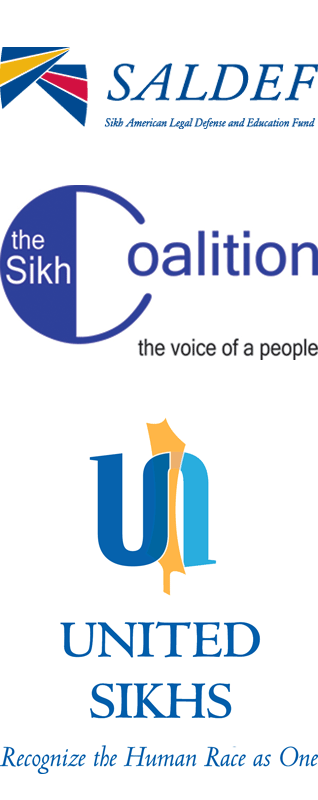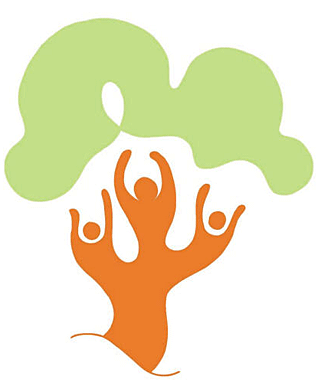Columnists
Fifty Years Hence
by I.J. SINGH
The following article has been written by Dr. I.J. Singh - who has been a guide to the three organizations named today as The Chic Sikhs of 2008, from their very inception - at our request, to provide a historical context to their activities and operations.
SALDEF, SIKH COALITION and UNITED SIKHS - three organizations - are the honorees today, collectively, as the Chic Sikhs of the Year 2008. They have gotten us Sikhs to a place that was only a hope and a dream to those of my and earlier generations.
I salute them, but a graybeard like me can't resist framing it in some unsolicited ideas, opinions and advice. So here it goes.
I am absolutely thrilled at what these three institutions have accomplished for us. I have known them all their young lives; I was there when they were conceived and have seen them take birth and thrive.
Theirs is part of the evolving story of the Sikh community in America. Let me briefly touch upon where we started and where we are now. That should tell you where we are headed and how; in that journey, these three societies are the stars.
Sikhs are not new to North America.
Sikh workers helped construct the Panama Canal at the turn of the last century in 1903-04. At about the same time, Sikh lumbermen and farmers in America and Canada opened up the West and laid the railroads.
In the teen years of the last century and until today, Sikh farmers have been the secret to California's famed fruits and vegetables and Canada's seminal lumber and railway industries. (You see, the West was not tamed and settled by the likes of John Wayne alone, as Hollywood and folklore would tell us.) In California, fully ninety years ago, Sikhs gave life to the Ghadar Party that forcefully campaigned for freedom for India from the British.
Sikhs even served in the American army during the First World War. They have been a part of the American dream for well over a century - no mean achievement in a country that traces its modern history to just over 200 years.
But becoming equal citizens - equal participants - in a country is a different matter altogether.
Bhagat Singh, a Sikh, who arrived in America in 1913 and served, wearing his turban and unshorn hair, in the American army, applied for American citizenship three times. Twice, it was granted only to be quickly rescinded, because he was not a "white" man. Finally, 18 years after he first applied, he received citizenship in 1935 that remained unchallenged.
The doors of citizenship were closed to Asians until 1946. Families could not join them. Asians could not own land - and Sikhs from the sub-continent were decidedly Asians.
The first generation of Sikhs struggled mightily against overwhelming odds as unequal residents in a society of unequal laws, but they got us the right to vote. They got us citizenship.
The second wave of Sikhs, relatively small, came after the Second World War, as India became independent and British power across the globe declined. At the same time, American opportunities in the form of fellowships and scholarships rose. These Sikhs were mostly few and single, young students, who found themselves in isolated corners of this vast land for study and training. They knew little of Sikhism when they came, and largely abandoned it in the process of becoming "American."
I am of that generation.
Beginning with the late 1960's and early 1970's, we saw plane-loads of Sikh immigrants come in pursuit of the American and Canadian dreams. These professionally educated Sikhs have built the communities and gurdwaras that we see today.
Their offspring, many born and raised here, have acquired the best of what this society has to offer. Now they, too, strut in the corridors of power. They are Sikh-Americans or Sikh-Canadians, not Indian-Americans or Indo-Canadians.
Many times my mantra - my challenge - to this young generation has been framed thus:
The first generation of Sikhs earned citizenship and voting rights.
The second generation gave us the opportunity for the best in education. Keep in mind that wherever you are today, you stand on the shoulders of giants.
So my challenge to you young people is, "Now, where are you going to take the community in the next fifty years?"
The young Sikhs in the American diaspora have rendered a powerful answer via these three "Chic Sikhs"- SALDEF (nee SMART), SIKH COALITION and UNITED SIKHS.
Yes, we have been here a hundred years, we have become voting citizens, and we have become sophisticated and educated, while moving nicely up the food chain. But ask any women or Blacks - there is more to equality than that.
We discovered this painful truth post-9/11, when mistaken identity made the streets of America selectively unsafe for us.
Sikhs will remain a minority wherever they live, whether it is in America, Europe, South-East Asia, Australia, India or any other corner of the globe.
This land is vast, our numbers exceedingly small. So, we remain largely unknown to our neighbors, and our traditions and ways shrouded in mystery.
Out battles against ignorance remain two-fold: education and legal remedies that stem from societal laws, when injustice is done to us.
It is in this that these three organizations have broken new ground. (I know there exist other organizations, as well, that have positively impacted our existence in the diaspora, but more of them another time.)
We need to develop working relationships with other existing organizations and communities in this country that have faced issues of civil rights, particularly the Jews, Blacks and women, among others.
The three musketeers of our Sikh existence here that I highlight today are doing exactly that.
If I recount the achievements and activities of SALDEF, SIKH COALITION and UNITED SIKHS individually, the list will be long and I will surely leave out many. So I direct the readers to their sites for details, and to the accompanying postings on this site for some highlights.
Briefly, each has been most active in legal advocacy and redress where Sikhs have been denied employment or entree into institutions and places because of their turbans and long hair. In other words, wherever their fundamental rights have been violated.
Sometimes, this has required that an expert witness be able to present credible evidence in a court. (In the interest of full disclosure, I state that I, too, have appeared as an expert witness in some cases.) This is an involved and cumbersome process. Position-papers have to be prepared that require research and even support staff. Our resources are limited, both financially, as well as in personnel for such matters.
I see little reason why the three organizations should not collaborate. It could well be that one of the organizations has material prepared on the historical and religious necessity, say, of the turban, but the second organization has the lead in the legal matter. There is no reason that the two could not share the products of their research.
One suggestion is that the three chalk out geographical lines in North America where one would take the lead, while the others support it. Or, it could well be that one organization develops a specialization in particular types of legal issues, while the others play a supporting role.
I offer you a telling example: No single organization has the resources to take on the French government in its ban on the Sikh turban in public space; nor can any one organization easily pursue the American army on recruitment of practicing Sikhs. Such matters require the wherewithal of all three, and more, even non-Sikh support. Which group takes the lead depends on location or the availability of specialized counsel or other resources.
Look at the U.S. Supreme Court. In most of the cases that come to it, there is one lead organization, with support and amici curiae briefs from many.
When these three organizations work towards building up the holdings of local libraries, perhaps a geographically defined bailiwick would be more apt and would reduce duplication of effort.
My argument would be similar when we undertake training programs for use in schools or for police and security people. Let the three share whatever material each develops, work with support from others, and for the use of all.
And let us credit others freely and generously. There is enough glory to sate everyone. In collaboration, the whole is greater than the sum of the parts, and the community would get a bigger bang for its buck.
And, finally, what I would like to see now is that our primary institutions (gurdwaras) award standing grants of support that are renewable every year, subject to a progress report. I suppose one would need to define clearly drawn lines between political and legal or educational activities.
I remember that, during the litigation over civil rights in the 1960's, many large legal offices and organizations pooled resources and joined forces across the country. Complex business litigation often crosses national and international boundaries, and depends on the collaboration of many.
I suppose I am also looking for a Sikh system modeled after the United Jewish Appeal and some others. Individuals then could donate towards our common national purpose even through their employers.
I celebrate SALDEF, SIKH COALITION and UNITED SIKHS today for what they have accomplished and even more for what they can do.
The baton has truly passed to the young.
What a wonderful response to "Where are you going to take us in the next fifty years?"
ijsingh99@gmail.com
December 31, 2008
Conversation about this article
1: Hardip Singh (Cary, North Carolina, U.S.A), January 02, 2009, 10:16 AM.
An excellent article. Yes, we still have to go a long way to eliminate the discrimination we Sikhs face in our country (.U.S.A.) It will have to be a committed struggle to cure this.
2: Pritpal Singh Kochhar (New York City, U.S.A.), January 02, 2009, 10:41 AM.
Congratulations to Prof. I J Singh for being a guiding light to these organizations. I agree that they need our full support. Of course, a pooling of resources to obtain maximum effectiveness is very desirable. One way to achieve that would be for the funders to be involved in the process to ensure personal agendas do not come in the way of the community's progress. I would urge all major funders to learn more about each organization, its strengths and weaknesses, and fund those projects that would give the best results for any stated goal.
3: Gurmukh Singh (United Kingdom), January 02, 2009, 12:58 PM.
Excellent article about these initiatives by young Sikhs which give us hope for the future. United Sikhs are linked, through Bibi Mejinderpal Kaur, to our open forum (BSCF) in which I continue to have some sort of co-ordination role. I am afraid that in the U.K. we have very little to show. Some initiatives we started ran into the sands, because those in a position to lead are most reluctant to delegate and also lack team-building and team-work skills. Personality clashes are often due to lack of vision and real ambition - sometimes we do not realize how large the cake can be through professional-level teamworking !






